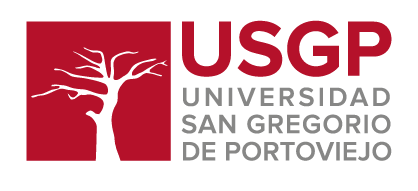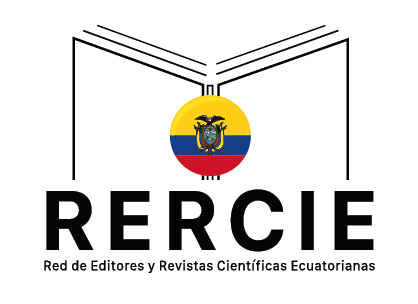Features Of Self-Organization Of Students Of Creative Specialties With Different Level Of Manifestation Of Creditity
DOI:
https://doi.org/10.36097/rsan.v0i36.1222Palabras clave:
creativity, risk appetite, curiosity, complexity of tasks, imaginationResumen
An empirical study of the creativity of students in creative specialties was conducted. Self-organization and its psychological means were chosen as a creativity factor: functional – goal-setting, situation analysis, planning, self-control, correction, and personal – volitional efforts. A randomization strategy was used to form the sample. To study the predictors of creativity by means of self-organization, a diagnostic toolkit was selected: a scale of personal creativity and a scale of self-organization. Statistical data processing was carried out using methods of descriptive statistics, Pearson Correlation Coefficient, analysis of variance and pairwise multiple comparisons of mean values. The results of the study showed the influence of self-organization on the level of creativity of students of a creative university. It has been established that among all psychological means of self-organization, the personal variable “volitional efforts” has the strongest influence on the manifestation of creativity, and among functional ones, goal-setting and correction. The article discusses the results of the study, summarizes some of the results and identifies areas for further research in this area.
Citas
Amabile, T. M. (1982). Social psychology of creativity: A consensual assessment technique. Journal of Personality and Social Psychology. 43, 997-1013.
Amabile, T. M. (1983). The social psychology of creativity. New York: Springer-Verlag
Averill J.R. Intelligence, Emotional, and Creativity. From Trichotomy to Trinity // Handbook of Emotional Intelligence / Eds. R. Bar-On, J.D.A. Parker. JosseyBass, 2000. P. 277–298
Bruner J. 1962. The conditions of creativity. In On Knowing: Essays for the Left Hand, ed. J. Bruner. Cambridge, MA: Harvard Univ. Press
Florida R., Goodnight J. Managing for creativity // Harvard Business Review. 2005. Product 1832. 9 p.].
Furnham, A., Zhang, J., & Chamorro-Premuzic, T. (2005). The relationship between psychometric and self-estimated intelligence, creativity, personality, and academic achievement. Imagination, Cognition and Personality, 25(2), 119–145.
Hayes, J. R., & Mellon, C. (1989). Cognitive processes in creativity. In J. A. Glover, R. R. Ronning, & C. R. Reynolds (Eds.), Handbook of creativity (Perspectives on individual differences) (pp. 135–145). N.Y.: Plenum Press.
Ivcevic, Z., & Mayer, J. D. (2009). Mapping dimensions of creativity in the life-space. Creativity Research Journal, 21(2–3), 152–165
Kaufman, J. C., & Baer, J. (2004). The Amusement Park Theoretical (APT) Model of creativity. Korean Journal of Thinking and Problem Solving, 14, 15–25.
Kaufman, J. C., Beghetto, R. A., Baer, J., & Ivcevic, Z. (2010). Creativity polymathy: What Benjamin Franklin can teach your kindergartener. Learning and Individual Differences, 20, 380–387
Kornilova, T.V., Kornilov, S.A. (2010). Intelligence and tolerance/intolerance for uncertainty as predictors of creativity. In: Yu.P. Zinchenko, V.F. Petrenko (Eds), Psychology in Russia: State of the Art. Scientifc Yearbook (pp. 240—255). Moscow: Lomonosov Moscow State University; Russian Psychological Society
Reiter-Palmon, R., Robinson-Morral, E., Kaufman, J. C., & Santo, J. (2012). Evaluation of self-perceptions of creativity: Is it a useful criterion? Creativity Research Journal, 24, 107–114.
Rowlings, D., & Locarnini, A. (2007). Validating the creativity scale for diverse domains using groups of artists and scientists. Empirical Studies of the Arts, 25, 163–172
Runco, M. A. (2006). Implicit theories of creativity. In M. A. Runco, & S. Pritzker (Eds.), Encyclopedia of creativity (pp. 27–30). San Diego, CA: Academic Press
Sternberg, R.J. (1985). Implicit theories of intelligence, creativity, and wisdom. Journal of Personality and Social Psychology, 49, 3, 607—627.
West, M.A. (2002). Sparkling fountains or stagnant ponds: An integrative model of creativity and innovation in work groups. Applied Psychology: An International Review, 51, 355 –386]
Afanasyeva N.A. Self-organization - a factor in the success of educational activities [Electronic resource] // Basic research. 2008. No. 2. P. 60-61. URL: http://www.fundamental−research.ru/ru/article/view?id=2613
Bazhenova N.G. The study of the psychological characteristics of self-organization of the personality of students // Modern scientific research and innovation. 2015. No. 8. Part 2 [Electronic resource]. URL: http://web.snauka.ru/issues/2015/08/56836
Barysheva T. A. Psychological structure of creativity (from the experience of empirical research) // Bulletin of the Russian State Pedagogical University. A.I. Herzen. Psychological and pedagogical sciences. No. 145— 2012. P. 54-64.
Bogomaz S.A. Typological features of the self-organization of activities // Bulletin of Tomsk State University, 2011. No. 344. P. 163−166
Volkova E.V. Intelligence, creativity and productivity of the development of professional activities / Psychological journal. 2011.V. 32. No. 4. P. 83-94.
Kornilova T.V. Rigidity, tolerance to uncertainty and creativity in the system of intellectual and personal potential of a person // Moscow University Herald. Ser. 14. Psychology. 2013. No 4. P.47
Kornilova T.V. Tolerance to uncertainty and intelligence as a prerequisite for creativity // Psychology Issues. 2010. No. 5. P. 3–12.
Kostromina S.N. Structural and functional model of self-organization of activity // Bulletin of St. Petersburg University. Series: Psychology. Sociology. Pedagogy. Series 12. Vol. 4, December, 2010, p. 153-161.
Lubart T, Mushiru K, Thorjman S, Zenasni F. Psychology of creativity / Transl. from fr. - M.: “Kogito-Cent”, 2009.
Markina N. A. The relationship of reflection and creativity of a person // Yaroslavl Pedagogical Bulletin. 2012. No. 2. T.1. P. 290-293.
Nesterova O.S. Self-organization as a leading professionally important quality of a teacher’s personality // Vestnik FSEI HPE MGAU. 2014. No. 1. P. 88-91 and others.]
Pavlova E.M. Implicit theories and self-esteem of creativity in the structure of self-identity // Psychology. Journal of Higher School of Economics. 2014.V.11. No. 4. P. 75-94.
Pavlova E.M., Kornilova T.V. Creativity and tolerance to uncertainty as predictors of the actualization of emotional intelligence in personal choice // Psychological Journal. 2012.V. 33. No. 5. P. 39-49.
Rastyannikov A.V., Stepanov S.Yu., Ushakov D.V. Reflexive development of competence in joint creativity // Psychology Issues. 1983. No. 2. P.35-42.
Soldatova E. L. Creativity in the structure of personality / E. L. Soldatova. - St. Petersburg: Publishing House of Leningrad State University, 1996.
Sternberg, R. J. (1985). Implicit theories of intelligence, creativity, and wisdom. Journal of Personal and Social Psychology, 49 (3), 607-627.
Faleeva L.V. Organization and self-organization as a personality quality: a comparative analysis of concepts // Modern problems of science and education. - 2012. - No. 4.; URL: http://science-education.ru/en/article/view?id=6896
Chiksentmihayli, M. (2013). Creativity. The flow and psychology of discoveries and inventions. M.: Career Press]
Yudina S.D., Voitik I.M., Chukhrova M.G., Chukhrov A.S. The specifics of the relationship of creativity and reflection // World of science, culture, education. No. 2 (75). 2019.P. 286-288.
Descargas
Publicado
Cómo citar
Número
Sección
Licencia
 Esta obra está bajo una Licencia Creative Commons Atribución-NoComercial-SinDerivadas 4.0 Internacional (CC BY-NC-ND 4.0).
Esta obra está bajo una Licencia Creative Commons Atribución-NoComercial-SinDerivadas 4.0 Internacional (CC BY-NC-ND 4.0).
















